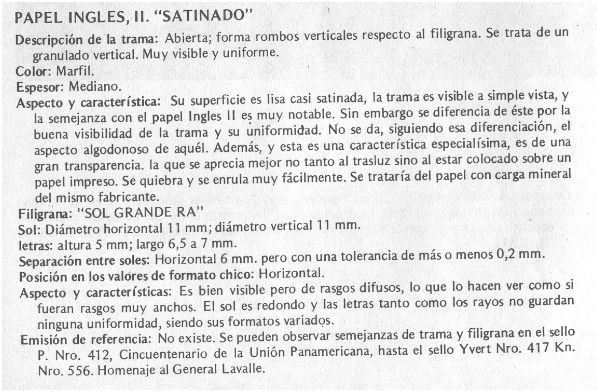In the GJ '09 we also find the term "mate lustroso" in connection with various confusing terms like tizado, satinado etc.
Reading the 2008 Clasificacion of the PyR I:
1.7. Mate Lustroso
Se trata de un papel muy especial (por eso se lo ha dejado para el final de la descripción), tan especial que se desconoce de dónde salió su nombre, que respetamos exclusivamente para hacer honor a los usos y costumbres y no confundir al principiante, ya que en el ex Catálogo Petrovich aparece así denominado. En realidad se trata de un papel cuya superficie, no encapada, presenta un leve brillo característico de los satinados, razón por la cual hubiera sido más razonable llamarlo Mate Satinado. La trama es del tipo granulado perpendicular, cerrada, con filigrana difusa y mediano grosor. Se lo encuentra sólo en sellos con impresión tipografiada y su procedencia es discutida por los especialistas. Aparece en 1939 en el sello 368 I y recientemente se habría descubierto en el 395 (en la tabla lo llamamos 395 I provisoriamente). El sol es redondo de 10 mm. de diámetro medio o bien ligeramente ovalado 10x10,5mm y el eje de enrollamiento es perpendicular al renglón de RA, letras que no se unen por la base.
So, what is this paper??? Does it only occur with stamps printed in typography?????
Can we see this sheen in other stamps as well???
If it is only in the 5c Moreno, we know rthat the 5c Moreno in typography has indeed a symmetrical paper mesh plus an orthogonal watermark with more or less the specifications of the Holandés, but it is NOT flocculous as the Holandés is !
rc2228


